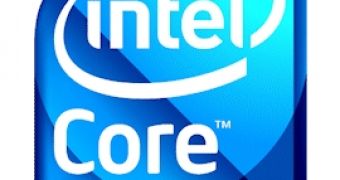More news on the upcoming Intel Core i7 processors is delivered at IDF, which takes place these days in Taipei. The company announced that the voltage for the DDR3 used with the chips would not be limited to 1.65V, and added that this is a safe range to ensure a long life for the processor. As we already explained, the use of memory kits that feature a higher voltage will severely shorten the life of the CPU. While it will not go flat right away, the effects will be visible in time, and it will fry in the end.
Since the giant chip maker said there would be no voltage limitation implemented on the Core i7, nor on the memory kits, motherboards makers already came with products that feature 2.2V or 2.4V on the memory. Still, the Santa Clara company doesn't know for sure at which voltage the processors begin being affected, and it announced the 1.65V barrier as the limit for a safety zone.
As for the CPU voltage, it will not be modified by Turbo Boost. Also, it seems that the voltage of the processor will not have to be modified by the average overclocker. Intel appears rather pleased with the overclocking capabilities of the Core i7, and only extreme overclockers will have to tweak the voltage to gain more performance.
The company revealed that all Core i7 models would support memory overclocking. According to Intel, the memory runs on a separate bus to the CPU, which enables users to overclock it. This may be a good thing to those that already have expensive DDR3 kits and would like to use them with the new processors. The idea is that the memory can be set at any overclock or underclock speed to fit the bus speed of the CPU. It remains to be seen what capabilities the new QPI has in comparison to the old FSB when it comes to overclocking.
X58 works with unmatched memory modules as well
The X58 motherboards will also allow for unmatched memory modules to be used. Perhaps the performance will not be the same as in the case of matched modules, but the new boards allow users to run one, two and three way interleaving over all three memory channels. The problem is that, even if the interleave can be spread over multiple modules in the same channel, the channel will appear in the interleave only once.
The company said that the smallest size on one interleave would be 192MB, and, as the smallest DDR3 is 512MB, all is good. Those willing to upgrade later have nothing to worry about, as they can run unevenly configured memory. Yet, Intel advised to use the same amount of memory in the same channel for best performance, but the size of the modules in each channel can differ.
The basic idea is that you can use a 2x2GB DDR3 kit and pair it with a 2x1GB kit. Since each channel supports one or two DIMMs, it means that you can split the memory into 2GB per channel to achieve best performance. And this may look rather gloomy to memory manufacturers that hoped to sell a lot of triple-channel DDR3 memory kits, as the modules could not gain too much popularity from the beginning.
We'll still have to wait another month until we're able to start playing around with Core i7 and memory modules to see how the triple channel actually works and how we can fry a processor.

 14 DAY TRIAL //
14 DAY TRIAL //